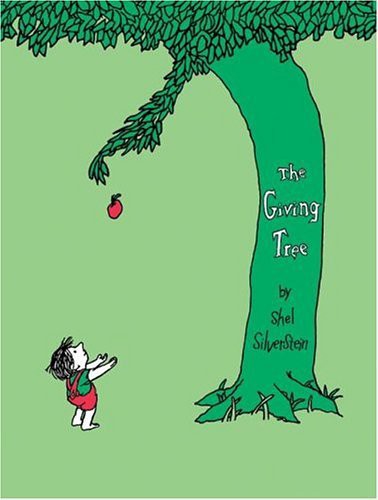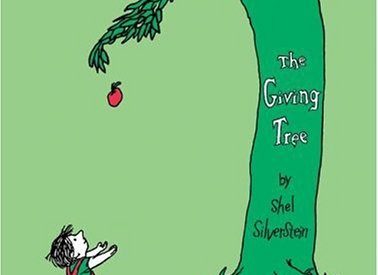 Cover art, retrieved from https://en.wikipedia.org/wiki/The_Giving_Tree
Cover art, retrieved from https://en.wikipedia.org/wiki/The_Giving_Tree
Silverstein, Shel. The Giving Tree. Illustrated by Shel Silverstein. Harper and Row, 1964. 64 pages.
The classic children?s book, The Giving Tree, was written and illustrated by Shel Silverstein. The book is about the relationship of a boy and a tree. When he was young, the boy would come and visit the tree every day. He wound swing on her branches, eat her apples, and as long as he did this, the tree was happy. As the boy gets older, he wants more and more from the tree. He wants money, so the tree gives him her apples to sell. He wants a house, so the tree gives him her branches to build a house. After giving most of herself to the boy, the tree states that she is happy. He then wants a boat, so the tree gives him her trunk so that he could build a boat. At this point, the tree is left as a stump. As the boy reaches old age, he visits the tree one last time and the tree tells him that she has nothing left to give him. The boy then wants a place to rest, so the tree gives him her stump so that he can rest. The book ends with the tree saying that she is happy.
 The elderly boy resting on the stump that was once the tree
The elderly boy resting on the stump that was once the tree
Throughout the book, there are multiple themes present. Some people think that the book represents a relationship between a parent and their child. The tree would represent the parent and the boy would represent the child. Often times, a parental figure gives so much to their children that they are left with nothing else to give. The selflessness of the parent ends up destroying themselves in the long run. After giving their children so much, the parent may rarely hear a ?thank you? in reply, but they are still happy because they are able to provide for their children. Some critics view the tree, or parental figure, as an enabler and some view the boy, or child, as a selfish person who only takes without being thankful.
Another popular theme that this book represents is the relationship between the Earth and humans. The tree would represent the Earth and the boy would represent the humans. In this day and age, humans tends to take and and take and take from the Earth without caring how they are affecting the Earth.
In a religious lens, this book can represent the relationship that God has with His people. The tree would be God and the boy would be His people, the humans. In these terms, the book demonstrates that God will always be there for His people if they need help. Religiously, the book can also represent unconditional love.
?? and she loved a boy very, very much ? even more than she loved herself.?
In a philosophical way, the Ethics branch is evident in The Giving Tree. This is because it allows the readers to ask questions on why people do what they do. Some questions that can be raised by children are: Why did the tree continue giving, if she is destroying herself? Why does the boy only take from the tree? Why is the tree always happy? What makes the tree happy? Why does the boy come back to the tree?
Overall, The Giving Tree, by Shel Silverstein, is an artfully crafted children?s book that details the act of selfless giving and represents the relationships that all people have.


